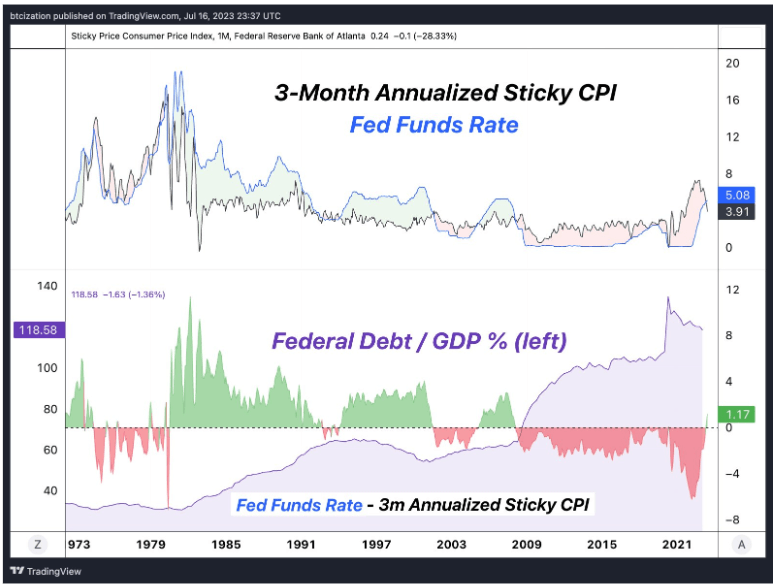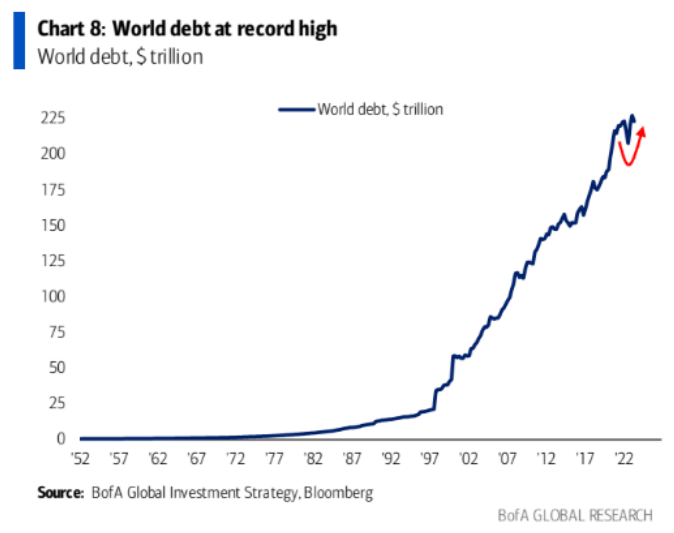Quick Take
Dylan LeClair, an analyst at Bitcoin Magazine, sheds light on the current U.S. debt-to-GDP scenario. He reveals that the ratio is approximately 119%, a decrease from a brief peak of 134%. This situation results from inflation compounding at a rate of 5.7%. LeClair further suggests a potential solution to reduce the debt-to-GDP ratio: adopting negative real yields, wherein bond yields fall below inflation.
Understanding Strategies to Reduce Debt to GDP
Jeroen Blokland of research firm True Insights proposes several strategies to mitigate the rising debt-to-GDP ratio. These methods include:
- Austerity: This approach implies government frugality, i.e., spending less. However, Blokland notes that austerity often leads to reduced GDP growth.
- Increased GDP Growth: This can be achieved through improved productivity and a bolstered labor force, even though this might be adversely affected by rising interest rates.
- Lower Interest Rates: This strategy allows for fewer coupons and more repayment, consequently reducing the debt.
- Inflation: By inflating the debt away, it becomes cheaper to repay.
- Debt Cancellation or Jubilee: While this is a more radical approach, it serves as a possible last resort solution.
With the current interest rates sitting at 5% in the U.S. and increasing across the Western world, the debt continues to become more expensive to repay. A diminishing labor force would further exacerbate this challenge.


The post Global debt now over two times greater than the global economy appeared first on CryptoSlate.
from CryptoSlate https://ift.tt/bA5OCw6
via IFTTT
